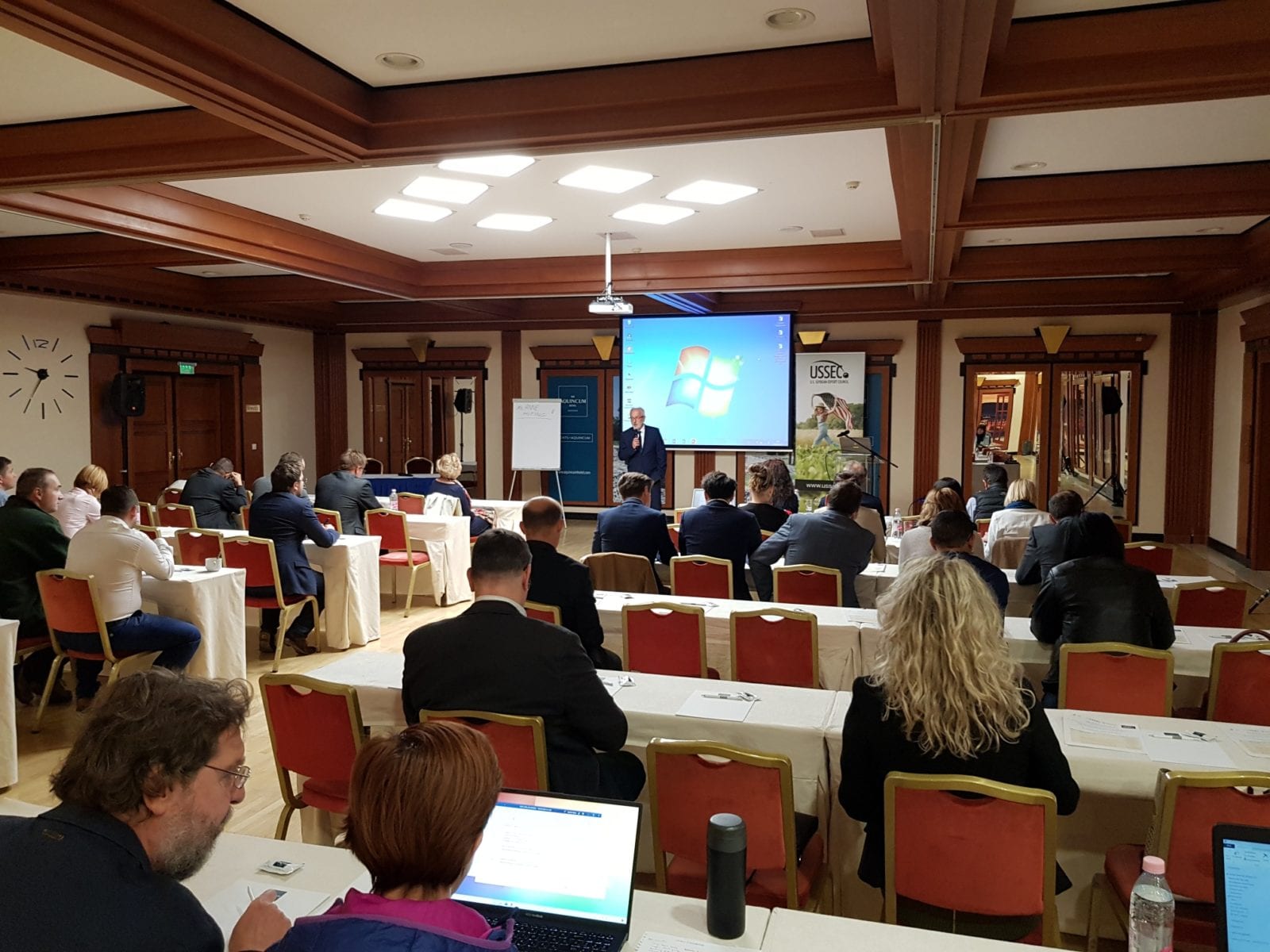U.S. Soy Message Shared with Hungarian Grain & Feed and Livestock Industries
- Category:
- Animal Utilization
- General News

USSEC and the Hungarian Grain & Feed Association (Gabonaszovetseg) unite to organize a large educational event biannually. This year, the conference was held at the end of September, bringing together about 70 professionals representing the local grain, oilseed, compound feed, and livestock production industries. There were four speaker representing U.S. Soy and two representing Gabonaszovetseg.
Jerzy Kosieradzki, USSEC Technical Director for North-East Europe, opened the conference, talking to the audience about USSEC, its funding sources, membership, and activities, providing many examples of events USSEC performs in various markets, including Hungary and Europe.
Keynote speaker Zoltan Pulay, President of Gabonaszovetseg, also explained the importance of USSEC as a trustworthy partner for the European compound feed industry. He spoke about USSEC’s contributions to the activities of the European Feed Manufacturers Federation (FEFAC), as well as to the Polish and Hungarian industry associations and to various local companies and individuals.
Dr. Ildiko Edit Tikasz of the Hungarian Institute of Agricultural Economy (NAIK-AKI) presented the results of her team’s monitoring of the local compound feed industry, providing multiple examples of how swine feed production can truly be sustainable and substantially reduce its environmental impact.
This subject led to the key topic for the commercial pork sector of how to maintain high performance in commercial pig operations when consumers request antibiotic-free production, explained by Anne Huting of the Schothorst Feed Research B/V in the Netherlands.
Dr. Rory Deverell of INTL FCStone, U.S. spoke of corn, wheat, and soybean global markets, encouraging local buyers to source their soybeans and/or soymeal in the U.S. where the ingredients are high quality, competitively priced, and reliably delivered.
“Protein Sources in Poultry Feeding: Influence of the Origin on Chemical Characteristics & Nutritive Value” was presented by Professor Gonzalo G. Mateos, UPM, Spain.
Two other interesting topics complemented the earlier program, namely feed milling technology improvements for efficient feed production, taught by USSEC consultant Juan Acedo-Rico of Spain, and optimization of grain and soybean extrusion based on U.S. technology, given by a Hungarian soy specialist trained recently at Insta-Pro International Zoltan Polgar.
The Hungarian Association and multiple participants indicated that the event was highly appreciated by the local audience and helped to keep the U.S. Soy message circulating in the market.








